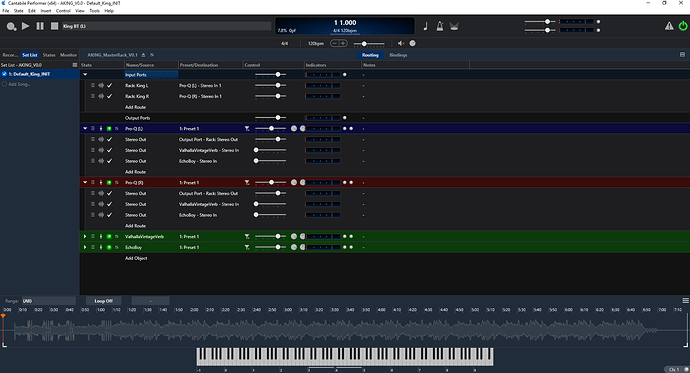Hi folks. I’m experimenting with the Master-rack principle for one of the acts I work for where I play synths/keys and live mix some pre-prepared audio (using eq and FX sends)… My Master-rack is below;
When I was using Forte I had to use a VST Forte to force the FX sends to be post fader however due to the routing in C3 I don’t think this is needed as I can just use the additional routes available. So I have a binding for the main gain of Pro-Q as a “Main” fader and bindings for the “FX Sends” of the sub routes for FX send level. I instinctively want to add a fader but it just seems like additional VSTs that aren’t really needed… So, why would you use a VST fader if you can bind to routes and plugins? Would I get any benefit from e.g. adding a VST Fader and routing this to the EQ plugin? The only thing I can think of is for metering but this wouldn’t serve me to meter the inputs to EQ and pre FX send…
Am I over-thinking? It does what I need but just curious as to what scenarios you need a VST fader that C3 can’t manage?

